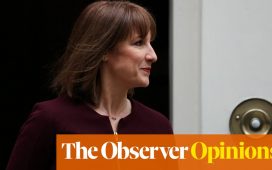House prices actually rose in October by 1.1 percent, adding £3,000 to the average price, breaking a run of six consecutive monthly falls. Prices are now down 3.2 percent over the last year to an average of £281,974, according to Halifax, but that’s far from the property apocalypse some predicted. They’re up £40,000 up on pre-pandemic levels.
Halifax Mortgages director Kim Kinnaird said the main reason prices are holding firm is that potential sellers are holding back rather than selling at a discount, reducing the supply of properties on the market and supporting prices.
First-time buyers are showing resilience, too, as many prefer to buy to escape soaring rents.
The market may be in even better shape than Halifax figures suggest, because they are only based on its mortgage lending book, said north London estate agent Jeremy Leaf. “The figures do not include cash buyers, who make up about 30 percent of the total and are actively negotiating with sellers.”
Leaf reports more activity “on the ground” but says transactions remain subdued. “We don’t expect to see much improvement until January or February at the earliest.”
Property is still prohibitively expensive, with homes still costing around 8.3 times the full-time average income, while higher mortgage rates add to the burden.
David Hannah, chairman of property consultants Cornerstone Tax, said this makes the Bank of England’s refusal to cut interest rates “extremely disappointing at a time when mortgage approvals have fallen to an eight-month low”.
He urged the BoE to reduce interest rates from today’s 5.25 per cent to at least 4.75 percent at its next meeting on December 14. “Lowering rates would provide vital support to everyone on the property spectrum, from landlords and developers to first-time buyers.”
Otherwise the market faces a “perfect winter storm” with prices plunging and “no soft landing expected”, Hannah warned.
The Bank of England may have held base rates for the last two meetings but mortgage rates are still falling, with Nationwide Building Society latest to cut. It now offers a five-year fix up to 60 percent loan-to-value (LTV) at 4.94 percent and a two-year fix at 4.99 percent, both with a £999 fee.
Chris Sykes, technical director at brokers Private Finance, said rate falls are levelling off but this should bring confidence to the market by giving buyers more certainty. Many have held back in the hope of bagging a cheaper loan later.
Much now depends on where interest rates go next but BoE governor Andrew Bailey has warned we may have to wait until the second half of the year for the first base rate cut.
Anna Clare Harper, chief executive of sustainable investment adviser GreenResi, said fears of a full-scale property meltdown are scaremongering. “Housing is so politically significant that no government will allow the market to crash.”
However, there is one nagging concern as new figures from UK Finance show the number of owners falling into arrears grew seven percent in the three months to June 30, while mortgage possession orders rose 18 percent to 2,923.
READ MORE: Three in four sellers slashing house prices to have hope of shifting property…
Myron Jobson, senior personal finance analyst at Interactive Investor, said these are still low levels but added: “This underlines the harsh reality that many are struggling to meet their monthly mortgage repayment.”
The government has drawn up a Mortgage Charter to make sure lenders support struggling customers, such as allowing them to switch to interest-only repayments for six months or extend their mortgage term.
Yet Jobson warned this may not be enough. “Lenders have readied themselves for a tsunami of customers seeking assistance as many come off cheap rates while the cost-of-living crisis rages.”
Many face far higher mortgage rates as a result and some will struggle to maintain payments or sell their property. Arrrears and repossessions could spiral as a result.
A house price crash doesn’t happen overnight. They can roll on for several years so we’re not out of danger yet.
Fourteen consecutive interest rate hikes have hit buy-to-let landlords particularly hard, especially those with just one or two properties, Jobson said. “Growing numbers are selling up and the increased supply of homes for sale could hit prices.”
In one respect, property is now more affordable than before. Wages rose 8.5 percent in the last year, so a 3.2 percent house price drop makes them 11.7 percent cheaper in real terms.
Yet that still isn’t bringing back the buyers. We’re on a knife edge today. Disaster has been averted so far but this one could still go either way.










